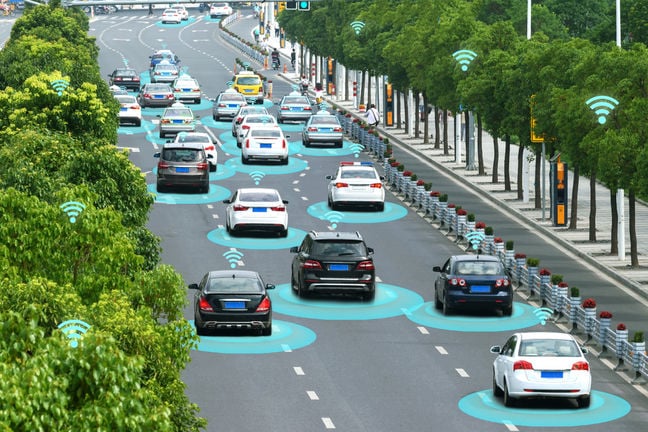
The UK government has promised to “clarify and update” the law to allow the introduction of self-driving vehicles to the country’s roads, but it is set to be a long, technical journey.
In the King’s Speech this week, in which the governing party sets out its legislative program, King Charles III said ministers would “introduce new legal frameworks to support the safe commercial development of emerging industries, such as self-driving vehicles” in the Automated Vehicles Bill.
In guidance notes [PDF] accompanying the speech, the government said it needed to update the law to “ensure the potential benefits of self-driving technologies can become a reality.” The government expect this transport revolution to create a UK market of up to £42 billion ($51.3 billion) and 38,000 skilled jobs by 2035.
The proposed legislation – details of which will become available when it is introduced to Parliament – would put “safety and the protection of the user at the heart of our new regime and makes sure that only the driver – be it the vehicle or person – is accountable, clarifying and updating the law,” the government promised.
The new laws are set to act on the recommendations of the four-year review of self-driving vehicle legislation by independent statutory bodies – the Law Commission of England and Wales and the Scottish Law Commission. The automotive industry has welcomed the prospect of greater clarity.
Mike Hawes, chief executive of the Society of Motor Manufacturers and Traders, said it would help position the UK as a leader in the rollout of self-driving vehicles on our roads.
He singled out the introduction of Authorised Self Driving Entities, and their legal roles and responsibilities, as important to ensuring a system of checks and balances to give consumers confidence.
“Manufacturers and developers are investing billions in this cutting-edge tech and the Bill will help us move from trial to deployment, essential if we are to the deliver the jobs, growth, road safety and increased business efficiency that connected and automated mobility offers,” he said.
But a report from Parliament’s Transport Committee highlights a number of obstacles in the vehicles’ path.
In his evidence to the PMs, professor Siddartha Khastgir, head of verification and validation for connected and autonomous vehicles at the University of Warwick, said there were issue in defining what is “safe enough” in a meaning technical context.
“We have not been able to come up with a definition of the minimum level of safety required. We can have all the frameworks that we might want to create, but we still do not have that threshold. The government have come up with the concept, for the minimum threshold, of a ‘careful and competent’ human driver. That is what we are calling it, but we do not know how to translate that abstract concept into something that can be implemented by engineering.
“That is the biggest challenge we have right now. Whatever we come up with as something that we say is safe will be unsafe if we do not define the threshold correctly,” he said.
The professor added that another issue arises with partial automation, and the transition of control from the automated system to the user. Despite significant research into the problem there was no consensus on the time an automated vehicle should wait before handing over to the human driver. “If you look at research papers, you get numbers of between two and 40 seconds. A lot can happen in that duration, so there is more work to be done in that space. One thing from a systems viewpoint is how you can make the driver more attentive when the transition is happening, or how you can keep the driver always in the loop even though they are not actually driving the system.”
Speaking to the committee, Jesse Norman, Department for Transport minister, said there was “potentially likely to be an offence [for the user] not to be available for a transition request from a vehicle,” for which there would be “severe sanctions.”
He felt driving skill was unlikely to decline in the short term, with self-driving vehicle usage limited to major roads, but that it was something the government was “going to have to watch.”
Another set of bumps in the road comes from changes in some liabilities to vehicle manufacturers and the insurance industry.
The committee heard how a cyber-attack causing mass casualties could bankrupt insurance companies.
Meanwhile, the insurance industry called for access to manufacturers’ data to assess their liabilities.
Mark Shepherd, assistant director and head of general insurance for the Association of British Insurers, argued that such data should be “stored on an independent and secure third-party server.”
UCL professor Jack Stilgoe said “a regime of data sharing” would be “absolutely key” to ensure self-driving vehicles operate safely, although industry representatives remained sceptical about manufacturers’ appetite for sharing data.
The UK government has promised to put laws in place to “unlock a transport revolution” in self-driving vehicles. But the challenges might mean it’s a long road ahead. ®
- SEO Powered Content & PR Distribution. Get Amplified Today.
- PlatoData.Network Vertical Generative Ai. Empower Yourself. Access Here.
- PlatoAiStream. Web3 Intelligence. Knowledge Amplified. Access Here.
- PlatoESG. Carbon, CleanTech, Energy, Environment, Solar, Waste Management. Access Here.
- PlatoHealth. Biotech and Clinical Trials Intelligence. Access Here.
- Source: https://go.theregister.com/feed/www.theregister.com/2023/11/10/ukgov_signal_legal_changes_selfdriving/



